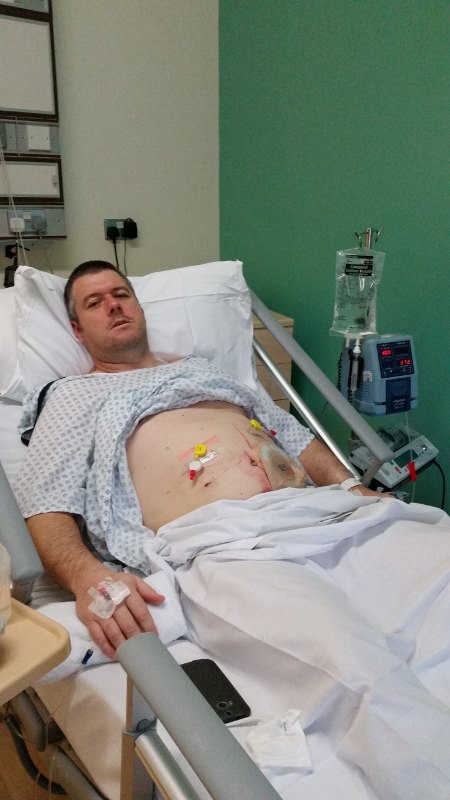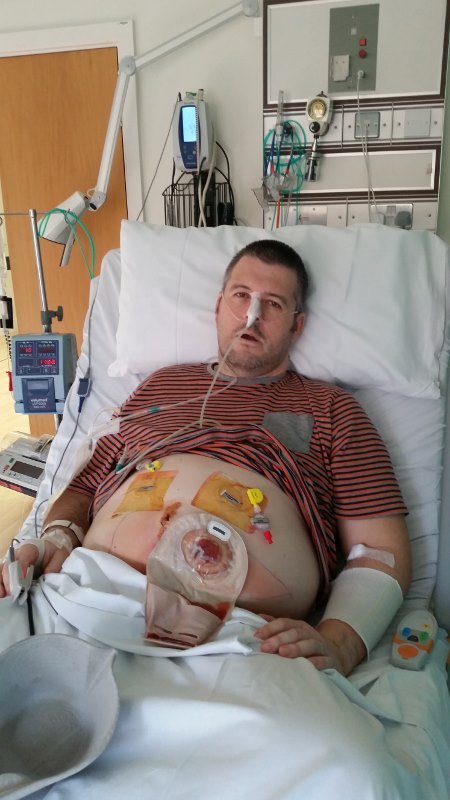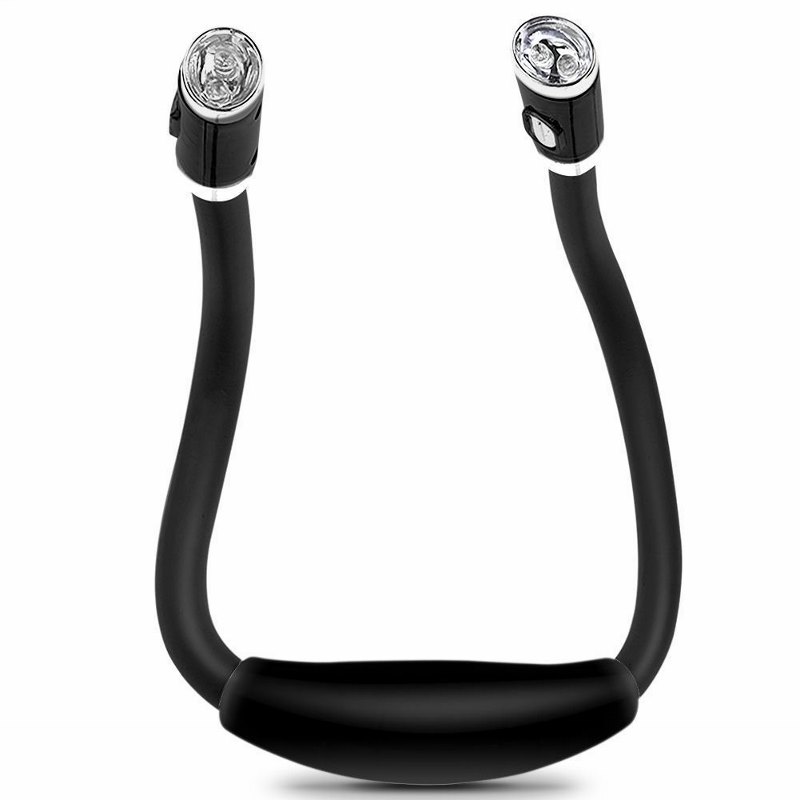My bowel cancer surgery was on 28th October 2014. This was seven months after I learned I had cancer, on the colonoscopy table, on 21st March. And six months from the point I was diagnosed with cancer, on 22nd April.
A lot had happened in the intervening time, not all of it good. And the time passed much slower than I would have believed possible; those seven months felt like an awful lot longer. The stress levels for me and my loved ones were immense. It was not a happy time.
A lot of the more difficult aspects had happened in the weeks running up to the bowel cancer surgery. The time since the liver resection, of seven weeks before, and the complications that followed it.
It is worth pointing out that just because I had a few tricky moments, doesn’t mean that anyone else will. I do these things so that you don’t have to…!
My bowel cancer surgery was at 2pm and I was in a lot of discomfort. I had been for quite a while. This meant that, while I was looking forward to the bowel cancer surgery, to get things dealt with, I wasn’t that sure I would survive it. There’s always a mortality risk in surgeries and I knew something was wrong with me.

The reality is that my risk of dying during the bowel cancer surgery was only a couple of percent. And, generally speaking, the closer you are to your healthy weight, and the fitter you are, the better your chances of an easy bowel cancer surgery. It’s never too late to eat well and exercise, no matter how much cancer you have.
But I didn’t die. I was, however, far from fine. And the bowel cancer surgery, which started as a keyhole procedure, didn’t finish as one. Perhaps this is best described by the surgeon’s notes:
Paul has now undergone resection of the primary tumour. At the time of surgery, the situation was complicated somewhat, as it was evident that the tumour had perforated and formed an abscess into the pelvis involving the bladder, the right pelvic side wall and right part of the rectum. In the presence of obstruction, infection and perforated tumour, I elected to bring out an end colostomy rather than primary anastomosis.
Long story short; I was full of shit!
Julie always suspected as much. Actually, now I think about it, a number of people have suggested this…
How I got to this position, though, involves a brief interlude to the weeks before the bowel cancer surgery. When I was in and out of hospital with a persistent fever that no one could explain. The site of the liver surgery was repeatedly checked and everyone agreed that nothing was wrong with it. Yet there was still the symptoms of an infection.
And I know hindsight is a wonderful thing, but it seems likely that the problem was slightly lower than the liver. Though, as the saying goes, When you hear hoofbeats look for horses not zebras.
But if you’re in Africa, and you’ve already really looked for horses, then maybe your mind should be drawn to the zebra option…
And, going back to the surgeon’s comments, I had infection in my abdomen. Infection in the abdomen is not good, it can lead to peritonitis. This is inflammation of the peritoneum, the lining of the inner wall of the abdomen. It has a mortality rate of about 10% in healthy patients, rising to about 40% ‘in those with significant underlying illness, as well as cases that present late (after 48 hours).’
And I don’t want to come across as negative because I’m eternally grateful to everyone involved in saving my life and keeping me alive. The staff at the hospital are amazing; working under incredible pressure with limited resources. And even if a mistake was made in identifying the source of the fever, it all worked out in the end.
Anyway, interlude over, because, when I was waking up I knew none of this. All I was concerned with, was whether or not I’d end up with an ileostomy bag, like my Dad had after his bowel cancer surgery. So, when I woke up, I ran my hand down the right side of my body and was relieved to feel that there was no bag there. The surgeon had said that I might not need one, and I felt happy knowing I had avoided having to spend the next few months changing ileostomy bags.
This happiness did not last long, as there were people lining up to ruin my day.

First there was the news that my bowel had ruptured at some point, potentially spreading cancer all through my abdomen. To illustrate how possible this is, we’ll step forward in time to the bowel resection I had in May 2018. While the surgeons were fiddling around with my liver, they found bits of green material. Upon analysis, this material turned out to be plant cellulose. Say, celery. It was still floating around, four years later. I’m not sure what this says about the nutritional value of celery, but I am sure I don’t want to eat any more of it.
Then there was the news that the bowel cancer surgery had changed from keyhole to open and that I had a nice, big scar running down my belly. Virtually through my belly button! Seriously, what have these surgeons got against my belly button?!
Finally, there was the really good bit, as mentioned in the surgeon’s notes above: I elected to bring out an end colostomy rather than primary anastomosis.
Yes, I had a colostomy bag. Which was placed on the left side of the abdomen, and nowhere near the black cross that the surgeon had put on me before the surgery bowel cancer surgery started. Which is why I hadn’t found it earlier. He’d used a permanent marker pen and everything…
I also had the usual array of other attachments: IV cannulas, one in the back of each hand; urinary catheter; Oxygen breathing hose; clip on a finger, for oxygen saturation and pulse; blood pressure cuff; etc.
This time I also had a couple of local anaesthetic catheters, with ports, to apply local anaesthetic directly to each side of the surgical incision. They were very useful.
The real kicker, though, would come a bit later on, when the surgeon came back. As he was talking me through the joys of life with a colostomy bag, he looked at the stoma and stopped mid-sentence. He called the nurse over and said something to the effect of, ‘Does that stoma look healthy to you?’
(The stoma is the bit of the colon that sticks out of the abdomen. It was what I would now be defecating from… it was my new bum!)
The resulting conversation ended with the conclusion that, no; the stoma did not look healthy. Oh, and that I’d have to go back under general anaesthetic the following day to redo the stoma. Like I say: I do these things so that you don’t have to…

Surgeries under general anaesthetic on consecutive days have some unfortunate consequences.
The most medically relevant is that your digestive system can’t cope with that sort of abuse and effectively shuts down. This becomes an issue in terms of leaving the hospital, because they won’t let you go until they’ve seen the stoma in action, so to speak. There were also other, more pressing issues regarding the lack of digestion, that I will come to shortly.
The most personally relevant consequence of all that anaesthesia was that it really span me out. The night of the second surgery, I woke up and seriously thought I was in the process of being abducted by aliens. I was so freaked out that I dared not even ring the bell, because I thought the nurses were in on it. A fact not helped by being able to see shadowy figures, through the glass of my door, moving around with what looked like necklaces of light.
Eventually a nurse came in to do my observations. She was wearing a neck reading light:

But, as she came through the door, I was genuinely scared. And this from someone who understands the maths involved in alien visitation: it doesn’t happen. And even if it did, first contact wouldn’t be with a fat bloke in a hospital bed.
My point is, that none of that mattered in my head. That amount of anaesthetic messes with your mind. I’ve never been tempted by hallucinogenic drugs, for just this reason. I know that if I took them, my brain would say, “Hey, you remember that scene from Sixth Sense that you really hate? Let’s dwell on that…” My mind hates me.
You can see from the second picture of me, the one in the tasteful shirt, that I’m very bloated. Part of the reason for this is also the reason that I’ve now also got a tube taped to my nose.
Your stomach, as part of it’s normal digestive duties, processes more than two litres of fluid from the liver and pancreas. If, however, your intestines are shut down for business, this fluid only has one way to go. Fortunately, I was standing by the sink, having a wash, as I discovered this fun fact.
The nursing staff, worried that the vomiting would damage my surgical wounds, decided that a nasogastric tube was in order. This involves passing a tube up the nose, down the throat and into the stomach. It is even less fun than it sounds. The first attempt was unsuccessful, when I pulled the tube out when it was halfway down my throat and I felt like I was choking. The nurse was not impressed.
The second attempt, though difficult, was successful, despite me throwing up all over the nurse’s hands. You would have thought that might have made her even less impressed, but we actually got on much better after that.
For me, though, the next 48 hours were awful. The tube down my throat was a constant irritation. I had no interest in eating or drinking. Talking was horrible. Even breathing was uncomfortable. Mentally, I just shut down as much as possible and waited for it to go away. This was very much not what the doctor ordered. The surgeon came back and said he wanted me up on my feet. I didn’t even deign that with an answer.
After the 48 hours, though, less liquid was being syringed from my stomach, so the tube was removed. Along with the urinary catheter. It was time to get back on my feet.
The main problem with this, though, was the Serous Fluid. My insides were still dealing with the aftermath of the bowel explosion and the surgical clean up. There was infection in there, for which I was on some pretty hefty antibiotics, but my immune system was actively involved. The result of this was serous fluid. Lots of it.
The volume of the fluid resulted in an increase of internal pressure, which forced the fluid out of the only available holes; those left over from the surgery. The lower part of my wound was leaking serous fluid at a steady rate. This was something that would go on for weeks afterwards. It also resulted in a particularly ugly scar. But that was cut out as part of a later surgery, so no harm, no foul.

The other result of this increase in pressure stems from a little known biological fact: the peritoneum actually extends into the scrotum, What that means, in situations like mine, is that the scrotum can swell up to the size of an orange. And not one of those crappy little ones you get in British supermarkets; a proper orange, like you’d pick off a tree in Cyprus or Spain.
Orange sized scrotums make walking somewhat challenging. Yet that’s what I was told was the best way to get my bowels working again: walking. And lots of it. Walking I couldn’t do, but shuffling I could manage. I shuffled like a card sharp…
And 10 days after my bowel cancer surgery, on the 7th November, my stoma finally started working and I got to go home. That was a particularly tough week and a half, one I hope I never have to repeat.
Not that I could dwell on it. I had a brand new hole that I needed to learn how to take care of. My meeting with the Stoma Nurse was booked in for the 13th; I’d have to muddle through until then.
2 thoughts on “Bowel Cancer Surgery”
Hope you doing OK x
Hi Karen,
Thanks for asking. I haven’t needed cancer treatment for about 4 years, now. An ever-increasing personal record. 🙂
I hope you’re doing well, too.
All the best,
Paul